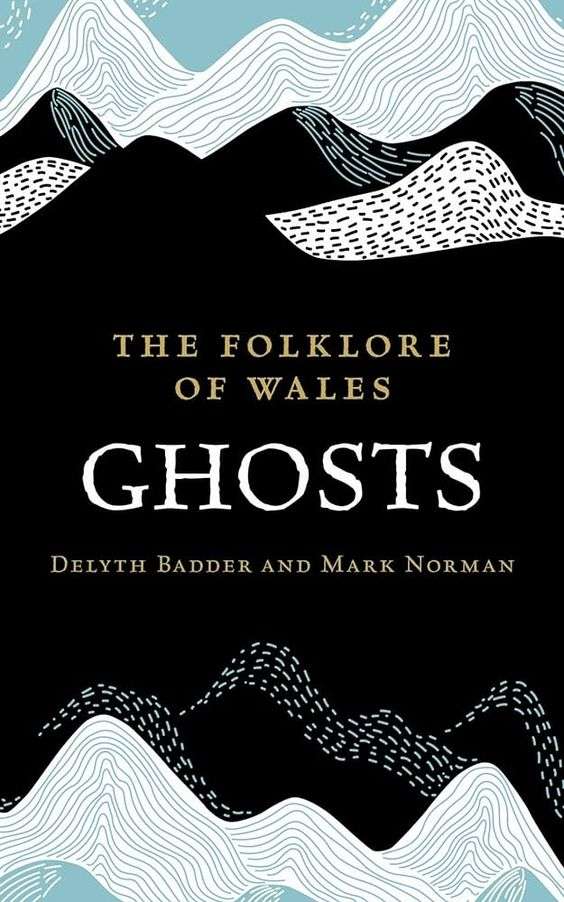We’ve implemented some new protocols around sending us messages via this website. Please email website “at” britishfantasysociety “dot” org for any issues.

For all things fantasy, horror, and speculative fiction
-
Announcement:

Ghosts
THE FOLKLORE OF WALES: GHOSTS by Delyth Badder and Mark Norman
Calon, HC, £14.99
Reviewed by Pauline Morgan

People have always been fascinated by ghost stories. There seems to be a part of our psyche that wants to be scared, so the idea of sitting around a fire in a safe place and telling these stories has happened for generations. The ideas for these stories come from somewhere. Some will be invented, but others will be embellishments of tales told by others. In more superstitious times, when places were more isolated, and there was little light to find the way in the dark, it was easy to become spooked. In some instances, the apparition may be an effect of surroundings and have a natural explanation. In others, the person who has the experience cannot explain what they have experienced. They would be convinced that the phenomenon is supernatural.
There are plenty of books dealing with ghosts, both fact, fiction and anecdotal. What makes this one different is that the authors have gone back to original accounts and documents written in Welsh. As it is a book which has academic value, many of the passages are reproductions of the Welsh text, with translations for those of us who are ignorant of the language.
The authors have divided the text into chapters which consider various types of ghostly reports that have been recorded in Wales. ‘Unfinished Business’ is one of the most common types of haunting, one of the earliest having been recorded by Pliny the Younger (not in Wales). In many of the Welsh instances, the ghost appears to a random person but cannot speak until that person asks it a question. Only then will it say what task it wants to perform before it can depart. The task may be the disposal of an object, often made of iron or lead the visitant to hidden money.
These apparitions can appear anywhere, but ‘Ghosts on the Landscape’ concentrates on the apparitions that often appear on boundaries, in particular stiles. They include devils and demons as well as human-seeming ghosts. They can include ‘Spectral Beasts’, many of which are dogs, some of which appear to protect travellers. They can be benign as well as scary. Since some of these creatures take the form of sheep or horses, the authors postulate that some of these sightings may be cases of mistaken identity.
‘Poltergeists’ are a well-known phenomenon, and in Wales, they seem to like throwing stones. Most of these hauntings occur indoors, but not all. There doesn’t seem to be the same association with adolescents that has been noted in other parts of the UK. Another fairly ubiquitous type of ghost is the ‘Ladi Wen’ or White Lady. Figures of a woman in white are often seen in the landscape. The authors ascribe some of these to false sightings or even inventions. Like all ghost stories, they may have been told several times before they were written down. ‘Water Spirits’, as the name suggests, are associated with water and may include drowned persons. Included in his chapters is a discussion of the afanc or water monster, which is also the Welsh name for the beaver. These nocturnal animals could easily have spooked travellers at a time before they became extinct in the UK.
Something the authors think is peculiar to Wales is the appearance of balls of fire and spectres having eyes of fire or transmuting into fire. These are included as ‘Fantastical Ghosts’. Also in this section are wailing apparitions and the Hen Wrach or Old Hag. There is also a recounting of methods of laying ghosts.
The final chapter recounts the occurrence of ‘Death Omens’ It includes premonitions of death, such as hearing a funeral taking place before it happens. Visible phantom funerals may include corpse candles – lights being carried in a procession towards a cemetery. Other death omens are screaming hags or hell hounds.
Personally, as a non-Welsh speaker, I would have liked an indication as to how the words were pronounced. I would also have found a map useful, at minimum, showing the counties mentioned and even the place names indicated. While this book is very factual and veering towards the academic, it also provides a writer of ghost or horror stories with a wealth of material. There is a very extensive bibliography.
Explore the blog:
Blog categories:
Latest Posts:
Tags:
#featured (56) #science fiction (25) Book Review (264) events (44) Fantasy (231) Graphic Novel (13) horror (136) Members (62) Orbit Books (48) profile (43) Romance (17) Science Fiction (50) short stories (28) Titan Books (52) TV Review (15)
All reviews
Latest Reviews:
- THE HOUSE ON THE BORDERLAND by William Hope Hodgson
- Monstrum by Lottie Mills
- Mood Swings by Dave Jeffery
- Yoke of Stars by R.B. Lemberg
- Hera by Jennifer Saint
- The Black Bird Oracle by Deborah Harkness
- RETURN OF THE DWARVES By Markus Heitz
- Delicious in Dungeon
- Toxxic by Jane Hennigan
- THIS ISLAND EARTH: 8 FEATURES FROM THE DRIVE-IN By Dale Bailey
Review tags:
#featured (2) Action (4) Adventure (4) Book Review (28) Fantasy (18) Featured (2) Feminist (2) Gothic Horror (3) Horror (14) Magic (3) Orbit Books (3) Romance (6) Science Fiction (5) Swords and Sorcery (2) Titan Books (7)